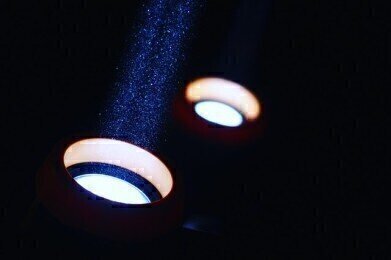Mass Spectrometry & Spectroscopy
What is the Principle of UV Spectroscopy?
Apr 26 2021
Laboratories rely on advanced instruments and techniques to carry out research, with UV Spectroscopy one of the most important methods. Used to measure the light absorbency rates of chemical substances, UV Spectroscopy is a quantitative technique used across a variety of different applications and industries, including microbiology, life sciences, pharmaceuticals and petrochemistry.
The foundations of UV Spectroscopy
UV Spectroscopy uses ultraviolet light to determine the absorbency of a substance. In simple terms, the technique maps the interaction between light and matter and measures. As matter absorbs light it undergoes either excitation or de-excitation, which generates what is known as a spectrum. This allows scientists to measure the rate at which a beam of light weakens after passing through a substance.
Understanding the Beer-Lambert law
The Beer-Lambert law, a principle discovered by Swiss polymath Johann Heinrich Lambert and German physicist August Beer, underpins the concept of UV Spectroscopy. Global leader in spectroscopic technologies Edinburgh Instruments describes the law as the following:
“The Beer-Lambert law states that there is a linear relationship between the concentration and the absorbance of the solution, which enables the concentration of a solution to be calculated by measuring its absorbance.”
Measuring UV Spectroscopy
To measure UV Spectroscopy scientists rely on spectrophotometers, sophisticated instruments that record the number of photons that reach the detector when directed through a sample. This allows scientists to determine the light intensity of a substance and determine its concentration. The higher the level of absorption at a certain wavelength, the higher the concentration of a substance.
Most commercial spectrophotometers use one of three basic designs: a fixed spectrophotometer equipped with a single sample holder and light beam, a scanning spectrophotometer with dual sample holders and light beams for simultaneous analysis or a non-scanning spectrophotometer with the capacity to measure multiple wavelengths.
Single, dual and non-scanning spectrometers
Single-beam and dual-beam spectrometers disperse light before it reaches the sample. Both are known as scanning spectrometers as they “scan” spectral regions and use quasi-monochromatic light to illuminate the object and record optical features such as absorbance, light scattering properties and reflectance. The third design is non-scanning spectrophotometers, which allow wavelengths to pass through samples and illuminate a substance on the photodetector side. This allows researchers to measure different properties simultaneously.
Nathan Hulme, a representative from industry-leading supplier Starna Ltd, explores the intricacies of UV Spectroscopy further in ‘UV-Vis: 5 steps to Pharmacopoeia compliance.’
Digital Edition
Lab Asia 31.2 April 2024
April 2024
In This Edition Chromatography Articles - Approaches to troubleshooting an SPE method for the analysis of oligonucleotides (pt i) - High-precision liquid flow processes demand full fluidic c...
View all digital editions
Events
Apr 28 2024 Montreal, Quebec, Canada
May 05 2024 Seville, Spain
InformEx Zone at CPhl North America
May 07 2024 Pennsylvania, PA, USA
May 14 2024 Oklahoma City, OK, USA
May 15 2024 Birmingham, UK






.jpg)











